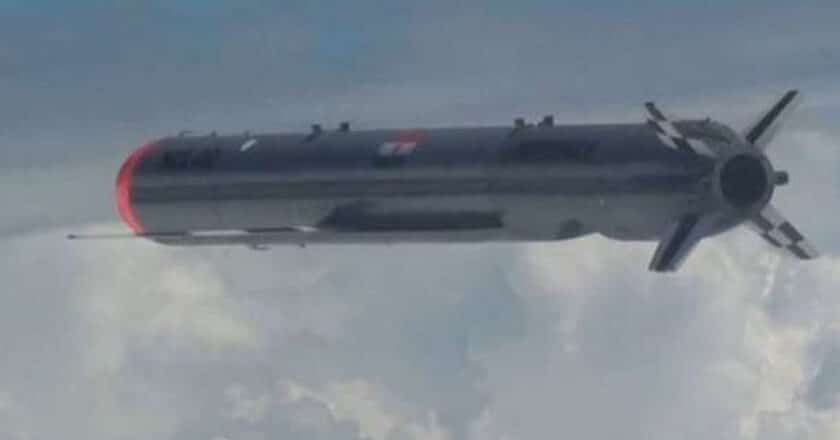La Defense Research and Development Organization (DRDO), that is to say the Indian DGA, let slip on December 3, 2019 that the national program relating to the development of an air independent propulsion system (Air Independent Propulsion (AIP) would not be ready before 2024. As a result, the construction of six submarines as part of the program P75i could finally emerge while the submarines of the program P75, that is to say the Scorpènes of the class Kalvari, will integrate the systems AIP developed by the DRDO with each “mid-life” renovation.
The programme P75i was approved in 2007 by the Indian Ministry of Defense. A first request for information was issued in 2008, and the Defense Acquisition Council approved the program in 2010. A new request for information was then issued without it leading to the call for proposals planned for 2012 In May 2017, the decision was made that the program P75i would fall under chapter 7 of the Defense Procurement Procedure 2016 : the boats will have to be built in India under technology transfer. But the competition between construction sites was abandoned in March 2018: Magazon Dock Limited who builds the Scorpènes will assemble the boats of the program P75i. A third request for information was launched in July 2017. Ministerial approval of the program expired in February 2018 and was renewed in January 2019. The budget envelope would reach between 5 and 7,5 billion euros.
It is a question of a conventionally powered submarine whose autonomy must be extended thanks to an anaerobic propulsion system and capable of launching cruise missiles. These boats would displace a tonnage 50% greater than those from the program P75 (1700 tonnes), i.e. a submerged displacement of around 2500 tonnes. They must be able to operate in coastal waters (“ littoral " and " shallow waters« ) and oceanic (“ blue water“) facing dense anti-submarine and electronic warfare opposition. With this in mind, they must be able to support anti-ship and submarine hunting missions, to carry out special forces operations, reconnaissance and surveillance (ISR), mining and land strikes (missiles). naval cruise ship).
The program specifications P75i specify the type and number of weapons taken:
- 18 heavy torpedoes,
- 12 medium-change naval cruise missiles (Submarine-Launched Cruise Missile (SLCM) which should be the Nirbhay,
- an indeterminate number (to be mixed with the SLCM ?) anti-ship cruise missiles (Anti-Ship Cruise Missile (ASCM) which should be the BrahMos II.
The decision of December 3, 2019 does not substantially modify the plans of the submarine manufacturers because the specifications provided for two alternatives: an anaerobic propulsion system of foreign design or one designed under the aegis of the DRDO. On the other hand, the decision may make it possible to initiate the selection of one or more bidders for the final phase of the program. In this perspective, both the movement in aimed diving and the number of weapons to be carried reduces the choices to only three constructions: the Russian Rubin Design Office, French Naval group and Swedish SAAB Kockums. India is unlikely to trust the candidacy of Navantia after the camouflage received in the Netherlands. The choice to rely on a foreign anaerobic system a priori rules out the Russian candidacy since the envisaged system risks being operational after that of the DRDO.

The final question of the program P75i is the possible entanglement of this conventionally powered submarine program with the first Indian Nuclear Attack Submarine program (SSN ou Ship Submersible Nuclear (SSN) whose launch is expected around 2025. The Nuclear Vehicle Launcher Submarines program (SSBNs) are designed under the senior direction of the DRDO and laid down at the public shipyard in Visakhapatnam which is fully committed to the construction of the S2 à S5. Naval group is the only bidder for the program P75i to be able to offer two submarines – Scorpène et Barracuda – able to receive a diesel-electric propulsion with extended autonomy by an AIP module or nuclear naval propulsion.
It remains that the aerobic propulsion system designed by the DRDO should be integrated into the hull of the INS Kalvari in 2024 during its first mid-life renovation after only six years of service at sea, an advanced project in order to offer an outlet to the program of the DRDO. This AIP module was expected from 2021 in order to be able to join the fifth Scorpene before delays forced us to target the sixth unit then the following program.
However, the Indian arms agency's decision not to equip the program's submarines P75i amounts to saying that this module AIP will only be used on the six boats in the program P75 (class Kalvari). In the long term, this leaves India with two choices: continue to develop the AIP sector with a view to equipping submarines with P75i with a new generation of modules AIP or maintain efforts with a view to making India a submarine manufacturer capable of exporting, like China, in order to respond to the geostrategic challenges on its two maritime facades.
Implicitly therefore arises the question of the future of the Indian submarine: all nuclear or a mix between conventional and nuclear powered submarines?
